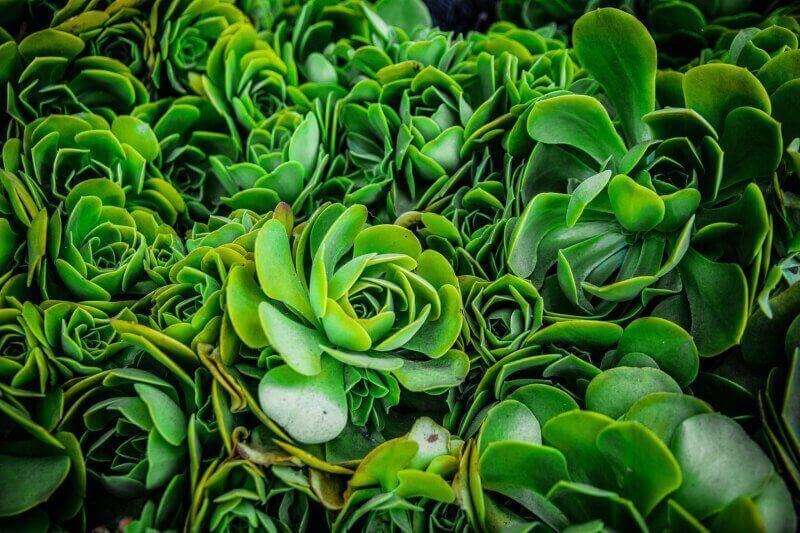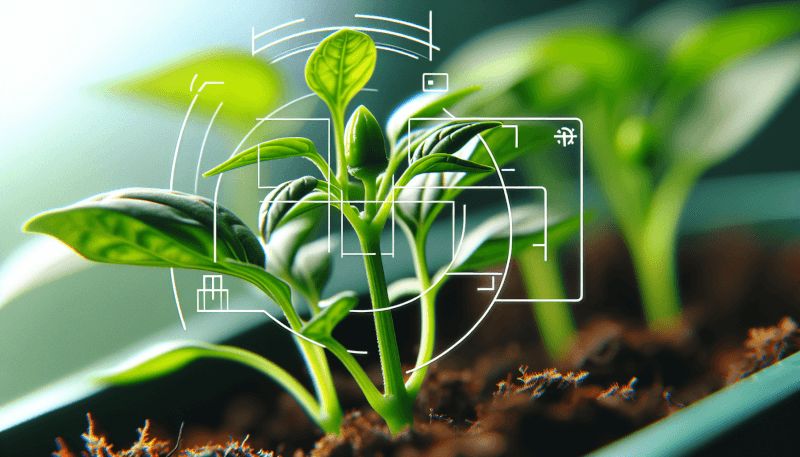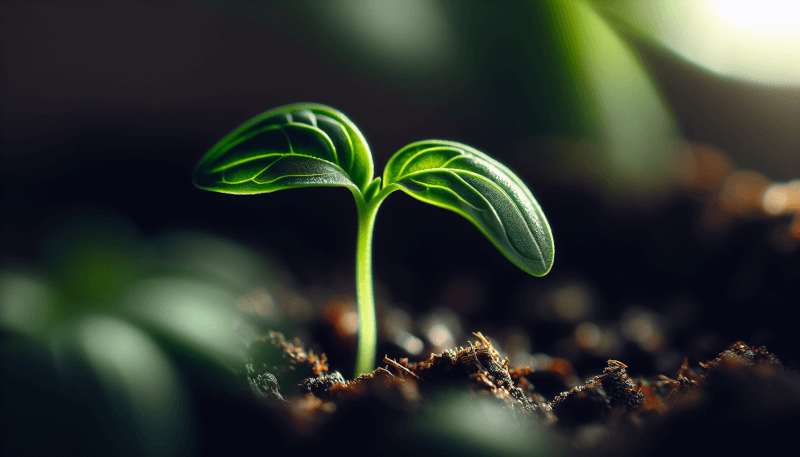👋 Click the mic button to talk to Alfred, the Todd's Seeds Gardening/Sprouting Expert – Feel free to ask him anything!
Ask Virtual Todd Anything - Click the Mic
Are you ready to add some spice to your garden? In this article, you will discover the secrets to successfully sprouting jalapeno seeds. Whether you are a seasoned gardener or a beginner, this step-by-step guide will equip you with all the knowledge you need to start growing your very own fiery jalapenos. From selecting the right seeds to providing the optimal growing conditions, you will learn the ins and outs of nurturing these flavorful peppers from tiny seeds to thriving plants. Get ready to embark on a journey of gardening adventure and enjoy the satisfaction of harvesting your own homegrown jalapenos. Let’s get started!

Choosing Jalapeno Seeds
Choosing ripe jalapeno peppers
When selecting jalapeno peppers for seed harvesting, it is important to choose ripe ones. Ripe jalapenos are typically bright green to dark red in color and have a firm, glossy skin. Avoid peppers that are too soft, wrinkled, or have blemishes, as they may not have viable seeds.
Selecting fresh and plump seeds
To ensure successful sprouting, it is crucial to select fresh and plump jalapeno seeds. Look for seeds that are plump, firm, and have a smooth texture. Avoid seeds that appear shriveled or discolored, as they may have lower germination rates.
Considering heirloom or hybrid varieties
When it comes to choosing jalapeno seeds, you have the option of selecting either heirloom or hybrid varieties. Heirloom jalapenos are open-pollinated and offer the advantage of maintaining the characteristics of the parent plant. On the other hand, hybrid jalapenos are the result of crossbreeding two different varieties and often exhibit traits like disease resistance or higher yields. Consider your preferences and gardening goals when deciding between heirloom and hybrid jalapeno seeds.
Preparing Jalapeno Seeds
Harvesting jalapeno peppers
To collect jalapeno seeds, start by allowing the peppers to fully ripen on the plant. They should turn a vibrant red color and become slightly wrinkled. Gently cut the jalapenos from the plant using clean pruners or kitchen scissors. Avoid damaging the peppers to ensure intact seeds.
Extracting seeds from the peppers
Once you have harvested the ripe jalapeno peppers, it’s time to extract the seeds. Begin by cutting off the top of each pepper, just below the stem. With a gentle twist, open the pepper and use a knife or your fingers to remove the seeds from the inner flesh. Be careful not to crush or damage the seeds during this process.
Cleaning the seeds
After extracting the jalapeno seeds, it is essential to clean them before growing. Place the seeds in a small bowl of water and gently swish them around, removing any remaining bits of flesh or pulp. Drain the water and transfer the seeds to a paper towel-lined plate. Allow them to air dry completely before proceeding to the next step.

Seed Pre-Treatment
Benefits of seed pre-treatment
Pre-treating jalapeno seeds before sprouting can improve germination rates and overall seedling health. It can help break seed dormancy and increase the chances of successful sprouting. Pre-treatment methods can enhance seed vigor, resulting in stronger and more vigorous seedlings.
Soaking the seeds
One common seed pre-treatment method for jalapeno seeds is soaking. Fill a small container with room temperature water and place the seeds inside. Allow the seeds to soak for 12 to 24 hours. This process helps soften the seed coat, making it easier for the embryo to emerge and grow.
Scarification for better germination
Another effective pre-treatment technique is scarification. This involves physically breaking or scratching the seed coat to promote germination. You can gently file the seed coat with a nail file or carefully nick it with a knife. Be cautious not to damage the inner parts of the seed while performing this procedure.
Indoor Sprouting
Choosing suitable containers
For indoor sprouting, it is essential to select suitable containers to grow jalapeno seeds. Use seed trays, peat pots, or cell packs with drainage holes to provide proper air circulation and water drainage. The containers should be clean and sterilized to prevent the risk of diseases.
Preparing the planting medium
Prepare a well-draining planting medium for indoor sprouting. Use a mixture of sterile seed-starting soil, perlite, and vermiculite for optimal results. Fill the containers with the planting medium, leaving about half an inch of space from the top.
Planting the jalapeno seeds
Create small holes in the planting medium with your finger or a pencil, about a quarter to a half inch deep. Place one or two jalapeno seeds in each hole and cover them lightly with the planting medium. Gently press down on the soil to ensure good seed-to-soil contact.
Providing optimal growing conditions
To encourage successful sprouting, provide optimal growing conditions for your indoor jalapeno seeds. Place the containers in a warm location with temperatures between 75-85°F (24-29°C). Ensure they receive at least 8-10 hours of direct sunlight each day or use grow lights to supplement light. Maintain proper moisture levels by misting or watering lightly as needed.

Outdoor Sprouting
Selecting a sunny and sheltered spot
When sprouting jalapeno seeds outdoors, choose a sunny spot in your garden or a location that receives full sun for at least 6-8 hours a day. It should also be sheltered from strong winds, as they can damage young seedlings.
Preparing the soil
Before sowing jalapeno seeds directly into the ground, prepare the soil properly. Remove any weeds or debris and loosen the soil using a garden fork or tiller. Incorporate organic matter, like compost or well-rotted manure, to improve soil fertility and drainage.
Direct sowing jalapeno seeds
In the prepared soil, create small holes or furrows that are about a quarter to a half inch deep. Space the holes or furrows approximately 12-18 inches apart to provide enough room for the later growth of the jalapeno plants. Place one or two seeds in each hole and cover them gently with soil.
Protecting seedlings from pests and harsh weather
To protect the sprouting jalapeno seedlings from pests and harsh weather conditions, consider using row covers, cloches, or garden fabric. These protective measures can shield the young plants from cold temperatures, strong winds, and potential pest damage until they have grown stronger.
Germination
Understanding seed germination
Germination is the process by which a seed transforms into a seedling and starts to grow. For jalapeno seeds, germination typically occurs within 7-14 days under optimal conditions. During germination, the seed absorbs water, swells, and the embryo inside begins to grow, eventually pushing through the seed coat to emerge as a seedling.
Monitoring temperature and humidity
Temperature and humidity play vital roles in the germination process. Keep the soil temperature consistently between 80-90°F (27-32°C) for optimal germination. You can use a seedling heat mat to maintain the desired temperature. Additionally, maintain a relative humidity level of 70-80% around the seeds by covering them with plastic wrap or using a humidity dome.
Expected germination timeframe
Under ideal conditions, most jalapeno seeds will start sprouting within two weeks. However, it’s important to note that seeds can have different germination rates, and some may take longer to sprout. Be patient and continue to provide the optimal conditions for germination until most of the seeds have sprouted.

Caring for Sprouted Seedlings
Providing adequate light
Once the jalapeno seedlings have emerged, it is crucial to provide them with adequate light to ensure healthy growth. Move the seedlings to a location that receives 12-16 hours of bright, indirect sunlight each day. If natural light is insufficient, you can use fluorescent or LED grow lights positioned a few inches above the seedlings.
Watering seedlings properly
Proper watering is essential for the healthy growth of jalapeno seedlings. Water them gently and evenly, ensuring that the soil is consistently moist but not waterlogged. Allow the top inch of soil to dry out slightly before watering again. Overwatering can lead to root rot and other fungal diseases.
Feeding and fertilizing
As the seedlings grow, they will require nutrients to support their development. Start applying a balanced liquid fertilizer, such as a 10-10-10 or 20-20-20 formula, at one-quarter of the recommended strength once the true leaves have appeared. Gradually increase the fertilizer concentration as the seedlings mature.
Supporting seedling growth
As the jalapeno seedlings continue to grow, they may need support to prevent them from bending or breaking under their weight. Use small stakes or plant supports to gently tie the seedlings to support their upright growth. Be careful not to tie them too tightly, allowing room for natural movement and growth.
Transplanting Seedlings
Determining the right time for transplanting
Transplanting is an essential step in the journey of jalapeno seedlings. Determine the right time for transplanting by waiting until the seedlings have grown at least 4-6 inches tall and have developed a strong root system. Nighttime temperatures should be consistently above 50°F (10°C) to prevent cold shock.
Preparing the transplanting site
Choose a well-drained location in your garden for transplanting the jalapeno seedlings. Clear the area of weeds and prepare the soil by loosening it and incorporating compost or organic matter. Dig holes slightly larger than the root ball of each seedling, spacing them 12-18 inches apart.
Gently transplanting seedlings
Carefully lift the jalapeno seedlings from their containers, ensuring that the root ball stays intact. Place the seedlings in the prepared holes and backfill the soil, gently firming it around the roots. Water the transplanted seedlings immediately after transplanting to reduce stress and help them settle into their new environment.
Ensuring proper post-transplant care
After transplanting, provide proper post-transplant care to help the seedlings establish in their new location. Keep the soil evenly moist, but avoid overwatering. Mulching around the seedlings can help conserve moisture, suppress weeds, and maintain a more stable soil temperature. Monitor the seedlings for any signs of stress or diseases and take appropriate measures if needed.

Troubleshooting Sprouting Issues
Identifying common sprouting problems
During the sprouting process, certain issues may arise that can hinder the growth of jalapeno seedlings. Common problems include poor germination rates, damping-off disease, root rot, pest infestations, and nutrient deficiencies. Regularly inspect the seedlings for any signs of abnormalities or stress.
Preventing damping-off disease
Damping-off is a fungal disease that commonly affects young seedlings, causing them to wilt and eventually die. To prevent damping-off, ensure good air circulation, avoid overwatering, and use sterile seed-starting soil. Additionally, you can apply a fungicide treatment before or after sprouting to further protect against this disease.
Dealing with pests and diseases
Pests, such as aphids, spider mites, and flea beetles, can damage jalapeno seedlings. Monitor the seedlings closely and take immediate action if any pests are spotted. Use organic pest control methods like insecticidal soaps or neem oil to combat the pests while minimizing harm to beneficial insects. Treat any diseases with appropriate fungicides or organic remedies.
Harvesting Jalapeno Peppers
Determining when to harvest
Jalapeno peppers are typically ready for harvest 70-90 days after transplanting. Look for mature peppers that have reached their desired size, which is often between 2-3.5 inches in length. For jalapenos meant for mild heat, harvest them when they are green. If you prefer a spicier flavor, allow them to ripen to a red hue.
Proper harvesting techniques
To harvest jalapeno peppers, use pruning shears or a sharp knife to cut the stem just above the pepper. Avoid pulling or twisting the peppers, as this can damage the plant. Handle the harvested peppers carefully to prevent bruising or puncturing.
Storing and preserving jalapeno peppers
Freshly harvested jalapeno peppers can be stored in the refrigerator for up to two weeks. If you have an abundant harvest, consider preserving them by pickling, canning, freezing, or drying. These methods will allow you to enjoy the delicious heat of jalapenos throughout the year.
By following these comprehensive steps, you can successfully sprout and grow jalapeno seeds, enjoying a bountiful harvest of fiery peppers. Whether you choose to grow them indoors or outdoors, providing the right conditions and care will ensure healthy seedlings and flavorful jalapeno peppers to spice up your culinary adventures. Happy jalapeno gardening!